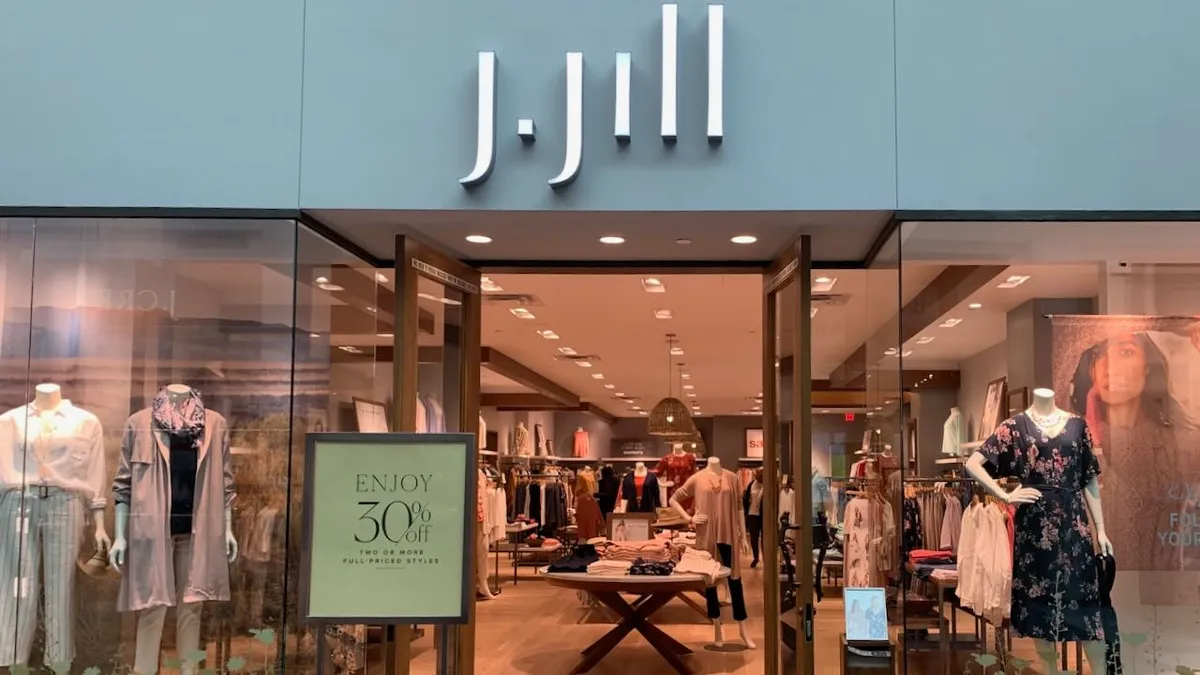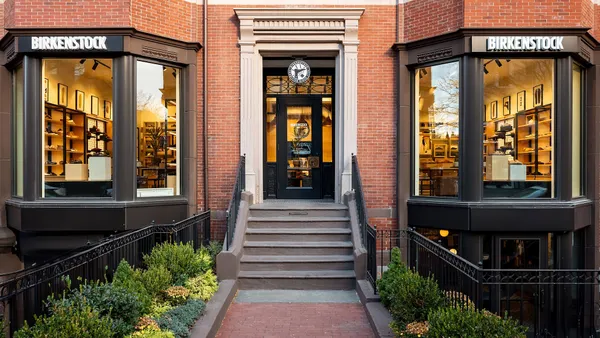Dive Brief:
- As it lapped last year's pandemic closures, J. Jill's first-quarter sales grew about 42% year over year to $129.1 million.
- The apparel seller also posted a positive operating profit of $8.7 million, compared to an operating loss of nearly $90 million in 2020.
- In a press release, CEO Claire Spofford called out a strong Mother's Day weekend and said that increased full-price sales, strong customer conversion and improved inventory management helped drive an increase in margins, which were up to 68% in Q1 from 55.1% a year ago.
Dive Insight:
The pandemic hit right at the heart of J. Jill's business as consumers, wary of socializing, paused on stocking up their wardrobes. Vaccines, stimulus and a need to refresh those wardrobes after a year of sweatpants for many has improved the lot of apparel sellers generally and J. Jill individually.
The women's apparel retailer dodged a bankruptcy last year thanks to a deal with lenders that followed a covenant default when the retailer issued a "going concern" warning in its financials.
Now the company is sounding a note of hope. J. Jill cited an uptick in consumer activity behind its sales increase. On an earnings call, Spofford, who took over the chief executive spot this year, said that "our customer is showing us she's really excited to shop with us in stores and online," according to a Seeking Alpha transcript.
"We saw great response to our product assortments this spring," Spofford said. "Customers, both existing and new, are really engaging with us and are reacting to our great wear-now offering."
J. Jill's strong sales increase from a year ago was to be expected given that the retailer's store footprint closed for a period last year in Q1. Flat or even a lesser increase would spell trouble for many in the apparel sector, which by and large suffered together especially in the early parts of 2020. J. Jill's sales remain about 27% below 2019 levels, though some of that difference can be attributed to having roughly 20 fewer stores in Q1 this year.
Along with being somewhat smaller physically, J. Jill is also more digitally oriented than it was pre-pandemic. Its direct-to-consumer sales represented 57.5% of all sales, which is down slightly from last year with its closures but is still considerably higher than in Q1 2019, when the figure stood at 42%.
As the company previously announced, J. Jill plans to close 20 of its remaining 265 stores this year as it tries to tighten its operating model.













